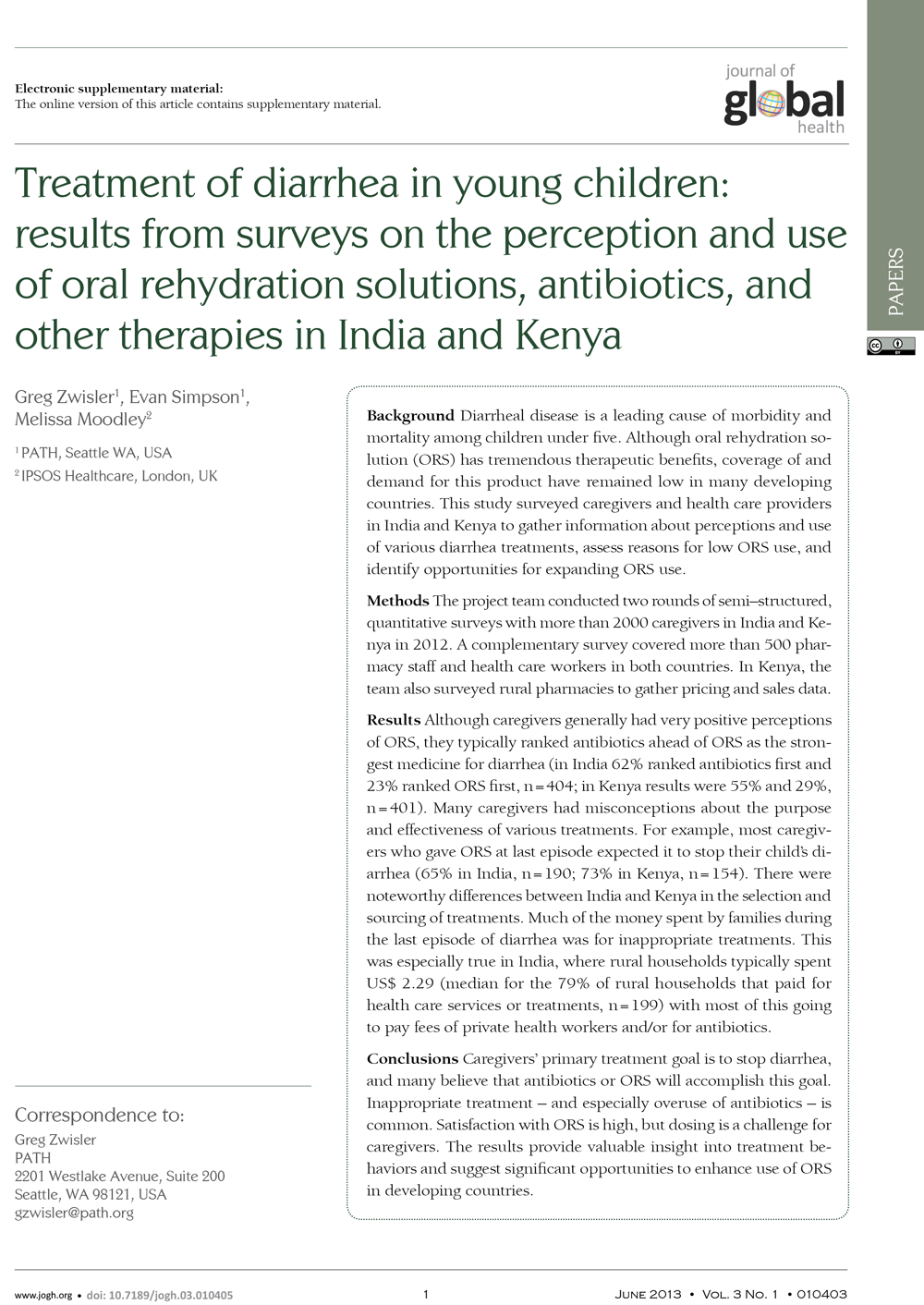
Resource Library
Treatment of diarrhea in young children: results from surveys on the perception and use of oral rehydration solutions, antibiotics, and other therapies in India and Kenya
The objective of this study was to investigate the clinical characteristics of children who died from diarrhea in low- and middle-income countries, such as the duration of diarrhoea, comorbid conditions, care-seeking behavior and oral rehydration therapy use. The study included verbal autopsy data on children who died from diarrhea between 2000 and 2012 at seven sites in Bangladesh, Ethiopia, Ghana, India, Pakistan, Uganda and the United Republic of Tanzania, respectively. Data came from demographic surveillance sites, randomized trials and an extended Demographic and Health Survey. The type of diarrhea was classified as acute watery, acute bloody or persistent and risk factors were identified. Deaths in children aged 1 to 11 months and 1 to 4 years were analyzed separately. Findings revealed that the proportion of childhood deaths due to diarrhea varied considerably across the seven sites from less than 3% to 30%. Among children aged 1–4 years, acute watery diarrhea accounted for 31–69% of diarrheal deaths, acute bloody diarrhea for 12–28%, and persistent diarrhea for 12–56%. Among infants aged 1–11 months, persistent diarrhea accounted for over 30% of diarrheal deaths in Ethiopia, India, Pakistan, Uganda and the United Republic of Tanzania. At most sites, more than 40% of children who died from persistent diarrhea were malnourished. Persistent diarrhea remains an important cause of diarrheal death in young children in low- and middle-income countries. Research is needed on the public health burden of persistent diarrhea and current treatment practices to understand why children are still dying from the condition.
Resource Type : Brief
Country : India, Kenya
Year : 2013-06-01T00:00:00
Language : English
Project : SHOPS


